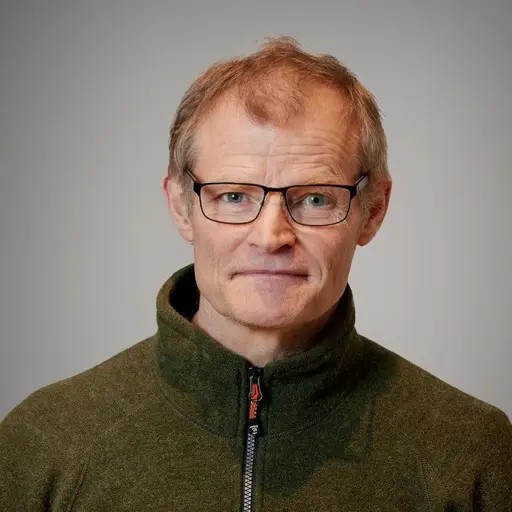
Since 2021, NASA launches several cube satellites for studying tropical cyclones from space. In the satellites, you can find amplifiers from the company Low Noise Factory based on transistor technology developed at the Department of Microtechnology and Nanoscience (MC2), Chalmers University of Technology. The amplifiers were designed for detecting oxygen and water in the atmosphere with very high sensitivity, and the semiconductor transistor chips were fabricated in the cleanroom laboratory at Chalmers.
Since long time, Chalmers University of Technology is in the research forefront in very low-noise transistor technology for microwave detection. The spin-off company Low Noise Factory (LNF) in Gothenburg has commercialized the technology and offers the most sensitive microwave amplifiers on the market.

The collaboration with Chalmers helped LNF get the assignment to deliver amplifiers to the Massachusetts Institute of Technology for the NASA project TROPICS (Time-Resolved Observations of Precipitation structure and storm intensity with a Constellation of Smallsats). The purpose of TROPICS is to study tropical cyclones from space using a constellation of microsatellites, so-called cube satellites or CubeSats.
CubeSats is a relatively new and cost-effective method in satellite design using a swarm of small units instead of one single large satellite. In TROPICS, each CubeSat is 10x10x30 cm, i.e. the size of a shoebox.
Detects water, oxygen and humidity
Using CubeSats in TROPICS, weather data can be swiftly updated which improves the early warning upon the emergence of cyclones and their movement patterns. Weather monitoring from the TROPICS satellites is done with radiometers which detect water, oxygen, and humidity in the atmosphere with high resolution.

Inside the radiometers one finds microwave amplifiers designed with transistors using the semiconductor indium phosphide. The semiconductor chips are manufactured in MC2's clean room at Chalmers.
The amplifier design and the ingoing transistors are tailored for the lowest noise, which in turn means that the radiometers in TROPICS can deliver data to Earth with the highest sensitivity.
In the summer of 2021, the first TROPICS CubeSat called Pathfinder was launched with very promising results. This was followed up this year in June by two more CubeSats which unfortunately were lost after launch. The four remaining CubeSats, planned to be launched 2023, will however be sufficient to meet TROPICS' scientific objectives.

Long-term collaboration
To be able to manufacture transistors with very low noise, deep knowledge is required in semiconductor materials, transistor technology, microwave design and noise measurements, research that has been made possible due to the long-term collaboration between Chalmers and LNF in a value chain that goes all the way from materials science to noise measurements in industrial testbeds.
"Chalmers and LNF’s joint research resulted in that our semiconductor chips are being used in CubeSats in space. It is very inspiring for me and my PhD students and the collaboration with LNF to see how fundamental research in transistors contributes to exciting climate projects such as TROPICS", comments research group leader Jan Grahn.
Figure captions
Figure 1: Cross-section of the indium phosphide transistor magnified 130,000X. Courtesy: Chalmers.
Figure 2: Amplifier chip with transistors processed in the cleanroom at MC2. Courtesy: Chalmers and Low Noise Factory AB.
Figure 3: Packaged low-noise amplifier containing the transistor chip. Courtesy: Low Noise Factory AB.
Read more: Recent research in the topic
In a recent published scientific article from Chalmers and LNF, it is shown how the position of a single doping plane with nanometer precision in the transistor influences the noise performance in the microwave amplifier. The role of the doping plane is to create a two-dimensional gas of free electrons in the transistor which enables its outstanding sensitivity when amplifying faint signals in the GHz range. Measurement and modeling of amplifier and the semiconductor device have guided the researchers to propose an alternative physical mechanism limiting the lowest noise in the transistor.
"Influence of Spacer Thickness on The Noise Performance in InP HEMTs for Cryogenic LNAs"
Junjie Li, Arsalan Pourkabirian, Johan Bergsten, Niklas Wadefalk, Jan Grahn
IEEE Electron Device Letters 2022 43(7) 1029 July 2022 https://ieeexplore.ieee.org/document/9783456
The research has been funded by Swedish Research Council, Sweden’s innovation agency Vinnova and in GigaHertz Centre, a collaboration between Chalmers and industry in microwave technology.
Contact
Jan Grahn
Professor and research group leader, Department of Microtechnology and Nanoscience, Terahertz- and millimeter Wave Laboratory
jan.grahn@chalmers.se, +46317721055
- Full Professor, Terahertz and Millimetre Wave Laboratory, Microtechnology and Nanoscience
